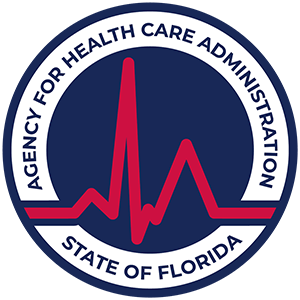Is Addiction a Disease? Exploring the Disease Model of Addiction
Explore 'is addiction a disease?' Unravel the impact on brain function, treatment approaches, and recovery.
Understanding Addiction as a Disease
When posed with the question, 'is addiction a disease?' it is crucial to understand that addiction is now recognized as a chronic brain disease involving complex interactions among brain circuits, genetics, the environment, and an individual’s life experiences.

Addiction as a Brain Disease
Addiction develops when the pleasure circuits in the brain get overwhelmed by addictive substances. These substances trigger an outsized response in the brain, causing dopamine to flood the reward pathway, 10 times more than a natural reward. Over time, the brain's circuits adapt, becoming less sensitive to dopamine, leading to increased tolerance and the need for more of the substance to achieve the desired high.
The American Society of Addiction Medicine (ASAM) defines addiction as a treatable, chronic medical disease. People with addiction use substances or engage in behaviors that become compulsive and often continue despite harmful consequences. Treatment approaches for addiction are generally as successful as those for other chronic diseases. Furthermore, ASAM recognizes the possibility of remission and recovery and the importance of prevention and harm reduction in the spectrum of addiction and recovery.
In 2018, ASAM's Board recognized the need for an updated definition of addiction that would be more accessible to many stakeholders. This led to the retirement of terms such as “medication-assisted recovery (MAR)” and “medication-assisted treatment (MAT)” in ASAM documents. ASAM now recommends using the term “medication” to refer to any FDA-approved medication used to treat addiction.
Impact of Addiction on Brain Function
Drugs can alter significant brain areas necessary for life-sustaining functions and can drive the compulsive drug use that marks addiction. Brain areas affected by drug use include the basal ganglia, which is the reward circuit in the brain.
The neurotransmitter dopamine reinforces drug use by causing changes in neural connectivity. This makes it easier to repeat the activity again and again without thinking about it, leading to the formation of habits. Large surges of dopamine "teach" the brain to seek drugs at the expense of other, healthier goals and activities [3].
Cues in a person's daily routine or environment that have become linked with drug use can trigger uncontrollable cravings whenever the person is exposed to these cues, even if the drug itself is not available. This learned "reflex" can last a long time, even in people who haven't used drugs in many years.
The brain of someone who misuses drugs adjusts by producing fewer neurotransmitters in the reward circuit or by reducing the number of receptors that can receive signals. This results in the person's reduced ability to experience pleasure from naturally rewarding activities, leading to a need for drugs to experience even a normal level of reward [3].
Ultimately, a person who misuses drugs may feel flat, lifeless, and/or depressed and be unable to enjoy things that were previously pleasurable. This leads to the need to keep taking drugs to experience even a normal level of reward, creating a vicious cycle.
Factors Influencing Addiction
Unraveling the complex nature of addiction involves understanding the various factors that contribute to its development. These factors include genetic influences, environmental conditions, and the role of neurotransmitters such as dopamine.
Genetic and Environmental Factors
Research supports the claim that genes are responsible for approximately half of a person's risk of addiction. The development of addiction, along with other health complications, is often the result of various genetic and environmental factors, as well as the interplay between these influences [4].
Not everyone who tries drugs or alcohol becomes addicted, which points to the existence of pre-existing vulnerability traits. Studies involving families, twins, and adoptees indicate that differential risk for addiction stems 50% from genetic factors and 50% from environmental factors.
The heritability of addictions, including substance use disorders (SUDs) and gambling, has been supported by evidence from family, adoption, and twin studies. Heritability estimates are usually higher for addiction than for substance use, indicating a genetic influence on the initiation and development of addiction.
Identifying specific genes and functional loci moderating vulnerability to addiction has been challenging due to the genetic complexity of addictive disorders. This complexity arises from incomplete penetrance, gene-environment interactions, polygenicity, genetic heterogeneity, and epistasis. Twin studies have shown that genetic heterogeneity and polygenicity-epistasis models can help understand the genetic complexity of addiction.
Genome-wide association studies (GWAS) have identified significant loci associated with addiction, such as the CHRNA5-CHRNA3-CHRNB4 gene cluster on chromosome 15q25, which is linked to nicotine addiction. GWAS for alcoholism have been less successful, with no genome-wide significant findings yet. Rare genetic variants within genes like HTR2B and MAOA have been associated with severe impulsive aggression, antisocial personality disorder, and alcoholism, indicating a potential role of rare variants in addiction vulnerability [6].
Role of Dopamine in Addiction
Dopamine is a neurotransmitter that plays a significant role in the development of addiction. It is responsible for the feeling of pleasure and reward, which is a key aspect of addiction. When a person uses a substance or engages in an addictive behavior, dopamine levels in the brain spike, causing a rush of pleasure or a "high." With repeated use, the brain begins to adjust to these dopamine surges by producing less of the neurotransmitter or reducing the number of receptors that can receive signals. As a result, the individual's ability to feel pleasure from the substance or behavior decreases, leading them to use more of the substance or engage in the behavior more frequently to achieve the same level of pleasure. This cycle can lead to addiction, as the individual becomes increasingly dependent on the substance or behavior to feel good or normal.
Understanding the role of dopamine in addiction provides insight into why overcoming addiction can be so challenging. It also underscores the importance of comprehensive treatment approaches that address both the physical and psychological aspects of addiction. These may include medication to help balance brain chemistry, counseling to manage behaviors and triggers, and ongoing support to prevent relapse and promote recovery.
Addiction and Brain Changes
When answering the question, 'is addiction a disease?', it's vital to examine the physical changes that occur in the brain as a result of addiction. This disease can restructure the brain and interfere with nerve cell communication, deeply impacting how information is sent, received, and processed.
Rewiring of Brain Structure
Addiction leads to a significant rewiring of the brain's structure, influencing key areas responsible for judgment, decision-making, learning, memory, and behavior control. This restructuring can interfere with an individual's ability to make sound decisions and can lead to problematic behaviors that perpetuate the cycle of addiction.
Specifically, substance abuse can alter crucial brain areas necessary for life-sustaining functions and can drive the compulsive substance use that marks addiction. One such area is the basal ganglia, a part of the brain's reward circuit. This region is severely affected by drug use, leading to its overstimulation and subsequent desensitization [3].
Effects on Nerve Cells and Information Processing
Beyond altering the brain's structure, addiction impacts how nerve cells send, receive, and process information. The neurotransmitter dopamine plays a crucial role in this process. Dopamine surges reinforce substance use by causing changes in neural connectivity, making it easier to repeat the activity without conscious thought, leading to habit formation. These large dopamine surges "teach" the brain to seek drugs at the expense of other, healthier goals and activities [3].
Furthermore, the brain adjusts to repeated drug misuse by producing fewer neurotransmitters in the reward circuit or by reducing the number of receptors that can receive signals. As a result, the person's ability to experience pleasure from naturally rewarding activities diminishes, leading to a need for drugs to experience even a normal level of reward [3].
These substantial changes in the brain underscore the fact that addiction is indeed a disease. Understanding these changes can prove critical in developing effective treatment strategies and combating misconceptions about addiction.
Addiction Treatment Approaches
It's important to understand that addiction, which is now recognized as a chronic brain disease by the American Society of Addiction Medicine (ASAM), requires a comprehensive treatment approach for effective recovery.
Medication and Counseling
The treatment for opioid use disorder, and in general, any form of addiction, is most effectively approached with a combination of medication and counseling. Research shows that medication-based treatments are the most effective approach, similar to treating other medical conditions like depression, diabetes, or hypertension [2].
ASAM now recommends using the term “medication” to refer to any FDA-approved medication used to treat addiction. Further, they suggest that “MAT” be read and understood as “medications for addiction treatment” due to its continued widespread use in laws, regulations, academic literature, the media, and the vernacular.
The role of counseling in addiction treatment can't be undermined. It provides individuals with the tools and strategies required to tackle triggers, manage cravings, and lead a life free from substance use.
Importance of Comprehensive Treatment
Understanding that addiction is a disease is vital because it highlights the importance of comprehensive treatment. Just as one wouldn't expect a diabetic patient to overcome their condition without proper medical care and lifestyle changes, the same applies to individuals battling addiction.
A comprehensive treatment approach typically involves the use of medication, as noted above, coupled with counseling or therapy sessions. This combination helps treat the physical aspects of addiction, while also addressing the psychological, social, and behavioral factors that contribute to substance use.
It's also crucial to understand that recovery is a long-term process and doesn't occur overnight. The goal of comprehensive treatment is not just to achieve sobriety, but to provide individuals with the skills and support needed to maintain their recovery in the long run.
Addiction can be managed successfully with the right treatment approach. By understanding addiction as a disease, society can work towards reducing the stigma associated with it and create a more supportive environment for those seeking help. This shift in perception can lead to more individuals seeking help, ultimately leading to lower rates of substance use and a healthier society.
Addiction Relapse and Recovery
The journey towards recovery from addiction is often marked by setbacks and relapses. These stumbling blocks, while discouraging, are a part of the recovery process and can serve as learning opportunities. Central to understanding this is the realization that addiction is a disease that affects the brain's wiring and function.
Managing Brain Changes
Addiction, as a disease, can significantly alter the brain's normal functioning. For instance, when a person misuses drugs, the brain adapts by producing fewer neurotransmitters in the reward circuit or by reducing the number of receptors that can receive signals. This leads to the individual's reduced ability to derive pleasure from naturally rewarding activities, driving the need for drugs to experience even a normal level of reward [3].
This adjustment in the brain function can lead to feelings of being flat, lifeless, and depressed, with the person unable to enjoy things that were previously pleasurable. This creates a vicious cycle where the person feels the need to continue taking drugs to experience a normal level of reward.
Managing these changes in the brain is a crucial part of the recovery process. It involves comprehensive treatment strategies that encompass medication, counseling, and other therapies that can help retrain the brain and break the cycle of addiction.
Viewing Relapses as Learning Opportunities
Relapses, while frustrating, should not be viewed as failures but as cues for getting back on track and making necessary adjustments to the treatment plan. According to IU Health, addiction relapses are a reality, but not a failure, as managing changes in the brain and deeply rooted behaviors is a continuous process.
Relapses can provide valuable insights into triggers and situations that make individuals vulnerable to substance use, helping them develop coping strategies. It also signals the need for an evaluation of the current treatment plan and making modifications if necessary.
It's important to remember that addiction, like other diseases, has identifiable signs and symptoms and is associated with pervasive medical, emotional, personal, and professional problems. It's not a reflection of a person's willpower or character, but a disease that requires medical intervention and support.
Therefore, the question, 'is addiction a disease?', can be answered affirmatively, based on medical criteria and scientific understanding. This perspective can help in reducing the stigma associated with addiction, encouraging individuals to seek help and understanding that relapses are not failures, but stepping stones in the journey towards recovery.
Addiction Misconceptions
With the debate around 'is addiction a disease?' ongoing, it's critical to address the misconceptions that persist around addiction and the barriers these misconceptions create for individuals seeking treatment.
Stigma and Barriers to Treatment
Despite the growing understanding of addiction as a chronic brain disease, stigma and misconceptions persist. Many people believe that individuals with addictions are merely making poor choices, which overlooks the complexity of addiction.
These misguided beliefs can lead to the use of stigmatizing language and create barriers to treatment access, compounding the challenges faced by those struggling with addiction. Individuals may hesitate to seek help due to fear of judgment or discrimination, and this can prevent them from accessing the resources and support they need to overcome their addiction.
Addressing Misconceptions about Addiction
To address these misconceptions, it's important to emphasize that addiction meets the criteria of disease as defined by Stedman's Medical Dictionary. This includes the presence of unpleasantness and identifiable signs and symptoms. Addictions are associated with pervasive medical, emotional, personal, and professional problems, and substance use disorders are among the top 10 causes of disability-adjusted life years lost worldwide [5].
Moreover, the American Society of Addiction Medicine (ASAM) recognizes addiction as a chronic brain disease, with the possibility of remission and recovery. This view highlights the importance of prevention and harm reduction strategies in the spectrum of addiction and recovery.
In 2018, ASAM's Board acknowledged the need for an updated definition of addiction that would be more accessible to many stakeholders, including patients, the media, and policymakers. A Task Force was appointed to update terms related to addiction and its treatment, resulting in a revised definition of addiction for use in ASAM’s policy statements.
By addressing these misconceptions and promoting an understanding of addiction as a disease, we can help reduce stigma, remove barriers to treatment, and change the narrative around addiction. This is an essential step towards providing individuals with the support and resources they need to manage their addiction and move towards recovery.
References
[1]: https://www.yalemedicine.org/news/how-an-addicted-brain-works
[2]: https://nida.nih.gov/publications/drugs-brains-behavior-science-addiction/drugs-brain
[3]: https://www.ncbi.nlm.nih.gov/pmc/articles/PMC3692718/
[4]: https://www.ncbi.nlm.nih.gov/pmc/articles/PMC3506170/
[5]: https://iuhealth.org/thrive/is-addiction-really-a-disease














.svg)








